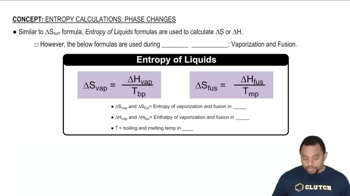Detailed calculations show that the value of Zeff for the outermost electrons in Si and Cl atoms is 4.29+ and 6.12+, respectively. (a) What value do you estimate for Zeff experienced by the outermost electron in both Si and Cl by assuming core electrons contribute 1.00 and valence electrons contribute 0.00 to the screening constant?
With the exception of helium, the noble gases condense to form solids when they are cooled sufficiently. At temperatures below 83 K, argon forms a close-packed solid whose structure is shown below. (b) Is this value larger or smaller than the bonding atomic radius estimated for argon in Figure 7.7?
 Verified step by step guidance
Verified step by step guidance
Verified Solution
Key Concepts
Noble Gases

Bonding Atomic Radius

Phase Changes and Solid Structure

Which will experience the greater effective nuclear charge, the electrons in the 𝑛=3 shell in Ar or the 𝑛=3 shell in Kr? Which is more likely to be closer to the nucleus?
Arrange the following atoms in order of increasing effective nuclear charge experienced by the electrons in the 𝑛=3 electron shell: K, Mg, P, Rh, Ti.
With the exception of helium, the noble gases condense to form solids when they are cooled sufficiently. At temperatures below 83 K, argon forms a close-packed solid whose structure is shown below. (c) Based on this comparison would you say that the atoms are held together by chemical bonds in solid argon?
Tungsten has the highest melting point of any metal in the periodic table: 3422°C. The distance between the centers of W atoms in tungsten metal is 2.74 Å. a. What is the atomic radius of a tungsten atom in this environment? (This radius is called the metallic radius.)
Tungsten has the highest melting point of any metal in the periodic table: 3422°C. The distance between the centers of W atoms in tungsten metal is 2.74 Å. c. If you put tungsten metal under high pressure, predict what would happen to the distance between W atoms.
